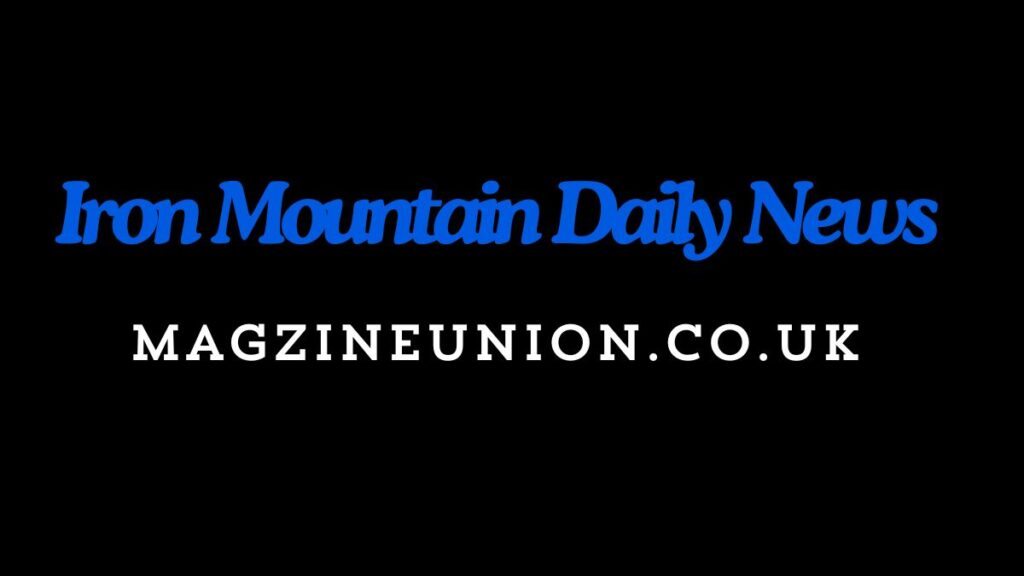Iron Mountain, Michigan, is a town steeped in rich history and cultural significance. Nestled among the lush forests of the Upper Peninsula, this small community has a story that echoes through time—one that revolves around iron mining. The legacy of iron mining isn’t just about extracting resources; it’s about shaping lives, communities, and an entire region’s economy. As we delve deeper into Iron Mountain’s past and its connection to the booming iron industry, we’ll uncover how this unique heritage continues to influence local residents today. Join us as we explore the fascinating tale carved in iron—a narrative woven with pride and perseverance that defines Iron Mountain Daily News identity!
The Importance of Iron Mining in the Town’s History
Iron Mountain’s identity is deeply intertwined with its iron mining heritage. The discovery of rich iron ore deposits in the late 19th century transformed this small town into a bustling hub of activity.
Mining not only fueled economic growth but also attracted waves of immigrants seeking opportunity. These individuals brought diverse cultures, shaping the community’s character and traditions.
Local businesses flourished alongside the mines, providing goods and services to an ever-growing population. Schools and churches sprang up, laying the foundation for future generations.
This industrious past carved out a legacy that residents cherish today. The stories from those times echo through local folklore, reminding us of hard work and determination. Iron mining truly forged more than just metal; it built a resilient community full of spirit and pride in their shared history.
The Rise and Fall of the Mining Industry in Iron Mountain
Iron Mountain, once a thriving hub of iron mining, saw its fortunes rise rapidly in the late 19th century. The discovery of rich mineral deposits transformed the small town into an economic powerhouse. Mines flourished, attracting workers from various backgrounds.
However, this boom was not destined to last forever. By the mid-20th century, demand for iron began to wane. Competition from other materials and regions took a toll on local mines. Gradually, operations scaled back or ceased entirely.
The impact on Iron Mountain’s landscape was profound. Abandoned sites became ghostly reminders of bustling activity that had defined generations. Families who depended on mining faced uncertainty as jobs disappeared.
While some adapted by finding new opportunities elsewhere, others held tight to their roots in this unique community marked by resilience and change.
Impact on the Local Economy and Community
Iron Mountain’s mining legacy shaped its economy in profound ways. Once a bustling hub, the industry created jobs and attracted families seeking opportunity. Miners played vital roles, not just underground but also in building community ties.
Local businesses thrived alongside mining operations. Stores flourished as miners spent their earnings on everyday needs. Cafés became gathering spots where stories were shared over coffee.
However, the decline of the mining industry brought challenges. Job losses rippled through Iron Mountain, affecting livelihoods and local services. Families faced uncertainty as they grappled with changing economic landscapes.
Despite these struggles, resilience emerged within the community. Residents banded together to support one another during tough times, forming bonds that endure today. The spirit of collaboration remains strong as newcomers add to this rich tapestry of history and hope for a brighter future.
Preservation Efforts and Tourist Attractions
Iron Mountain is not just a relic of its mining past; it actively preserves this rich history for future generations. Local organizations have dedicated efforts to maintain historical sites, ensuring that visitors can glimpse the town’s vibrant heritage.
The Iron Mountain Historical Museum stands as a testament to the area’s mining legacy. Exhibits showcase artifacts and stories from those who worked in the mines. It’s a place where visitors can connect with the community’s roots.
Outdoor enthusiasts will find plenty to explore as well. The picturesque trails wind through former mining areas, offering both adventure and education about iron extraction methods used long ago.
Annual events celebrate this unique history, drawing tourists eager to experience Iron Mountain’s charm. Festivals often feature live music, local food vendors, and guided tours that bring the past alive for everyone involved.
Reflections from Current and Former Residents
Current and former residents of Iron Mountain share a rich tapestry of memories tied to the mining era. For many, childhood days were filled with tales spun by parents about life in bustling mines.
Some remember weekends spent exploring remnants of iron ore operations. The excitement was palpable, as friends ventured into abandoned shafts, imagining what life was like for miners decades ago.
Others reflect on community gatherings that celebrated the hard work and dedication of those who toiled underground. Events showcased local talent while honoring their shared heritage.
Hope resonates through these stories too. Many believe this legacy can be revitalized through education and tourism. They envision visitors walking the same streets where once echoed laughter amidst laborious endeavors.
Each narrative captures a connection—an unbroken bond between past struggles and present aspirations, weaving together personal histories that define Iron Mountain’s identity today.
Conclusion: Honoring the Past, Embracing the Future
Iron Mountain Daily News mining legacy is a testament to its rich history and the resilient spirit of its community. The iron ore that once fueled industry and prosperity has shaped the lives of countless residents, leaving an indelible mark on this vibrant town.
As we reflect on the rise and fall of the mining industry, it’s crucial to recognize how these changes have impacted not just the economy but also the very fabric of Iron Mountain. Today’s efforts to preserve this heritage ensure that future generations can appreciate what came before them.
Visitors flock to local attractions, eager to learn about a time when iron mining was at its peak. This interest helps bolster tourism while honoring those who worked tirelessly in challenging conditions.
Current and former residents share their stories with pride. They remember families who depended on mines for livelihood and communities built around shared experiences. These narratives are essential threads in Iron Mountain Daily News ongoing story.
The journey from past struggles to present opportunities reflects a commitment to honoring tradition while looking forward. As Iron Mountain continues evolving, it maintains strong ties with its history—always embracing new possibilities along the way.



